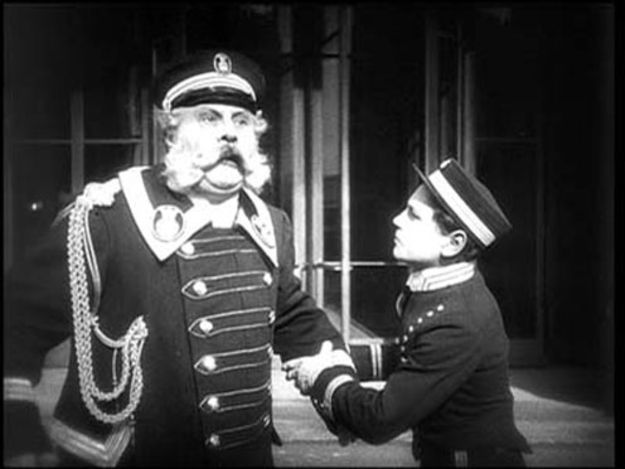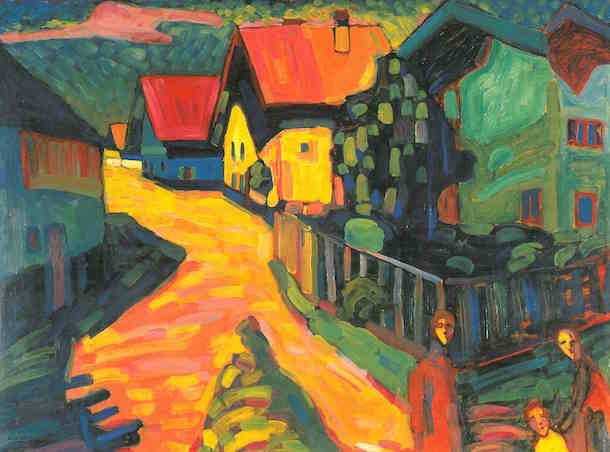https://web.microsoftstream.com/video/551a1ebd-e5c1-4c1e-befe-b2dd40d60160
All posts by Cameron Christie
Filters
Expressionist Influence of Film Noir (GE Task 5)
Out of the Past (1947)

Asphalt Jungle (1950)

Touch of Evil (1958)

Classic German Expressionist Films (GE Task 4)
Der Golem, wie er in die Welt kam -The Golem: How He Came into the World (1920)

Faust (1926)

The Last Laugh (1924)

Expressionist Art Movement Stylistic Conventions (GE Task 2)
Expressionism typically uses abstract colours and shapes that typically represent real objects, locations and people

Expressionism uses these distinct forms to represent an alternate reality. Humans tend to be distorted

How the context of the Weimar Republic affected the production and context of classic German Expressionist Cinema (GE Task 1)
The Weimar Republic, also known as the German Republic, was the German government from mid 1919 to early 1933. They struggled throughout their run with issues such as hyperinflation, largely due to the Great Depression, and political unrest, including political murders and attempted power seizures from opposing parties.

With all these problems, people needed a break from reality. Doing as humans do, they decided to create escapism in the form of art, in this case film. This is how the Classic German Expressionist Movement began. Filmmakers used real life as a imitation by distorting it, creating unusual cityscapes with stranger stories. These stories reflected real trials and tribulations in some bizarre way, for example The Cabinet of Dr Caligari warns of controlling figures and being forced to commit terrible acts, which was a bit ahead of its time.
The Story of Film
Workers Leaving the Lumiere Factory (1895)
The Phantom Ride is basically the early concept of a tracking shot by putting the camera on a vehicle
The Sick Kitten was the first film to use a close up and Life of an American Fireman used cuts to continue the story
Florence Lawrence was the first well recognised movie star
To avoid paying Thomas Edison’s patent fee
Scandinavia, particularly Sweden and Denmark
Jersey Cinema
During the Golden Age of Cinema, there were 4 commercially available cinema locations, not including places used occasionally for events such as film festivals
However, there is now only one location, Cineworld, and even though there are more than double the screens than before, you don’t have any choice in location
Role 2 – Director’s Job
A director is the person who tells other people how the movie should be displayed to the audience. They do this with the help of all the people during production from the set designers to the cinematographer to the editors
“Directors are the creative leads of the film. They hold the creative vision throughout the whole process, from pre-production through to the final edit.
They are employed by the executive producer or producer, who is ultimately in charge of a production. Directors start with a script, and work with a screenwriter and sometimes a script editing team. It’s not uncommon for the director to be the screenwriter as well.
It is the job of a director to imagine the script in a visual form.”
Role 2 – Directing – Inspiration
Reservoir Dogs (1992) is a great example of direction in a film. The whole film hinges on the acting and drama between a group of robbers after a heist on a jewellery store. The premise mandates excellent communication between the director and the actors, and this was achieved in spades. The direction created the desired effect and made for an enjoyable movie

An inspirational practitioner of directing is Quentin Tarantino who directed movies such as Inglorious Basterds (2009), Kill Bill Vol 1 (2003), Pulp Fiction (1994) and Django Unchained (2012). His style of direction tends to be focused on the use of violence and conflict, however he still manages to attract a broad audience and the consistently high ratings proves this. He demonstrates that he can direct with finesse and quality.
Role 1 – Cinematographer’s Job
A cinematographer is the person who translates the director’s vision into the camera. The cinematographer uses the many tools, such as lenses, depth-of-field, camera angles and lighting to achieve this. However, this job is only in production. They usually stay out of pre and post production.
“A cinematographer, also known as a Director of Photography, is in charge of the camera and the lighting crew. They’re the person responsible for creating the look, color, lighting, and for framing of every single shot in a film. The film’s director and cinematographer work closely together, as the main job of a cinematographer is to ensure that their choices support the director’s overall vision for the film.”
